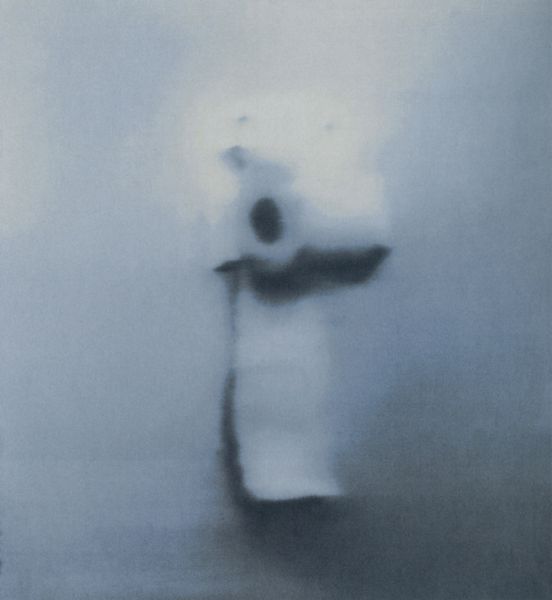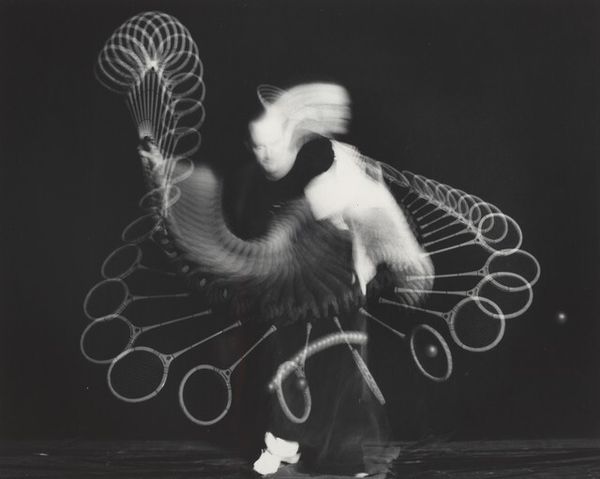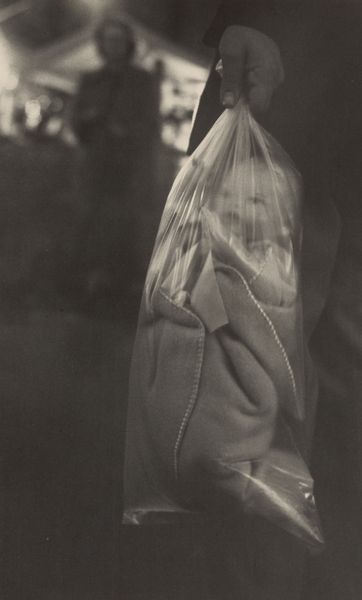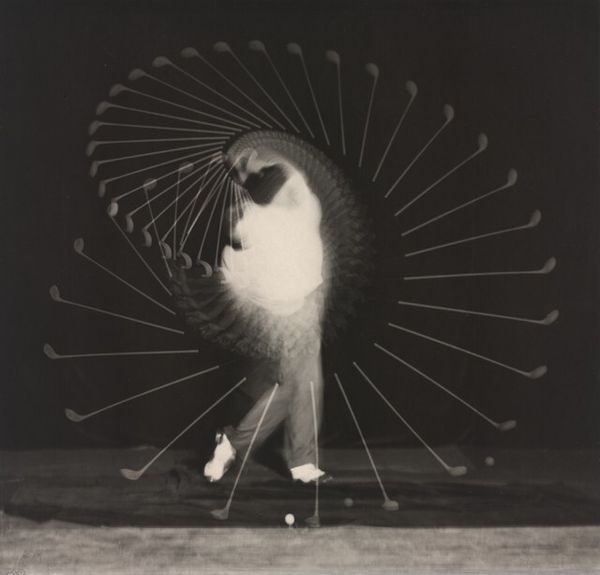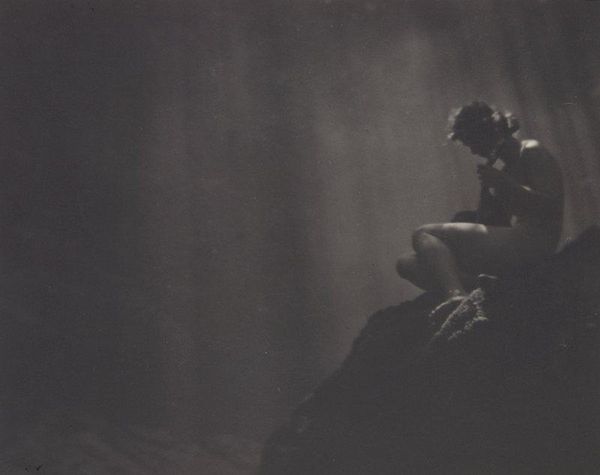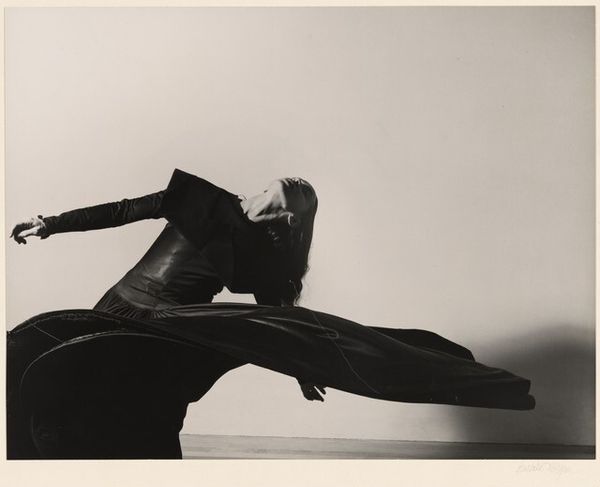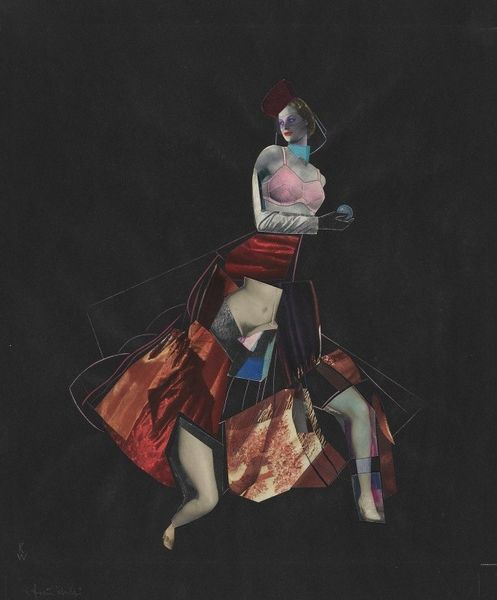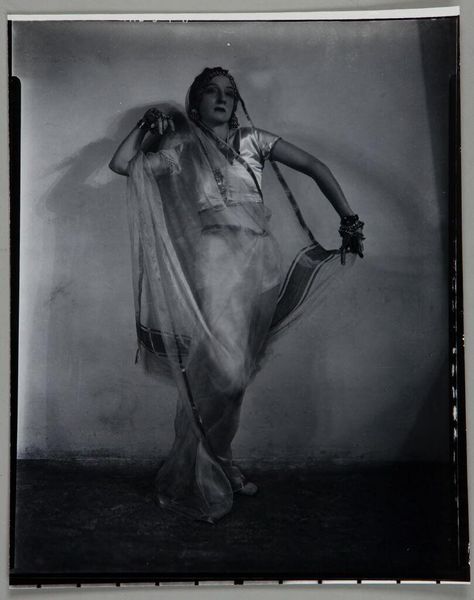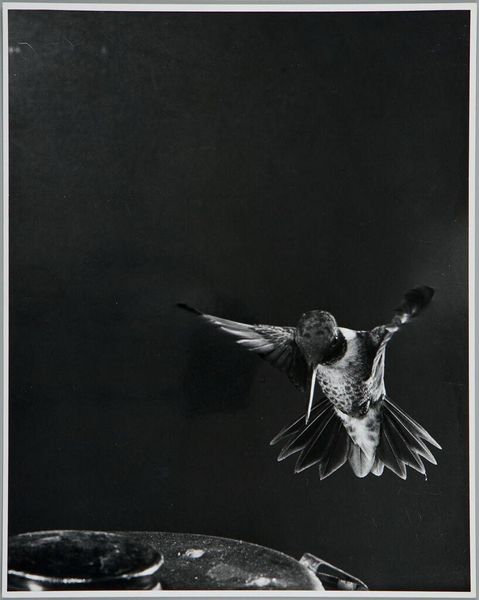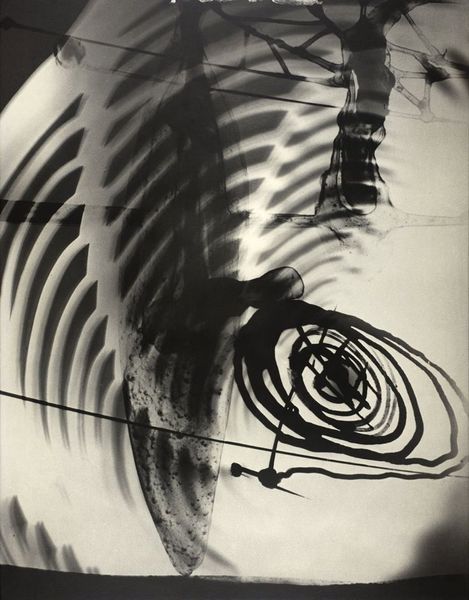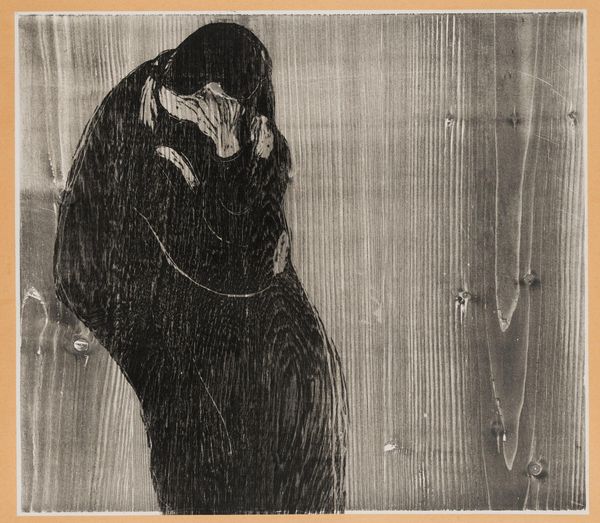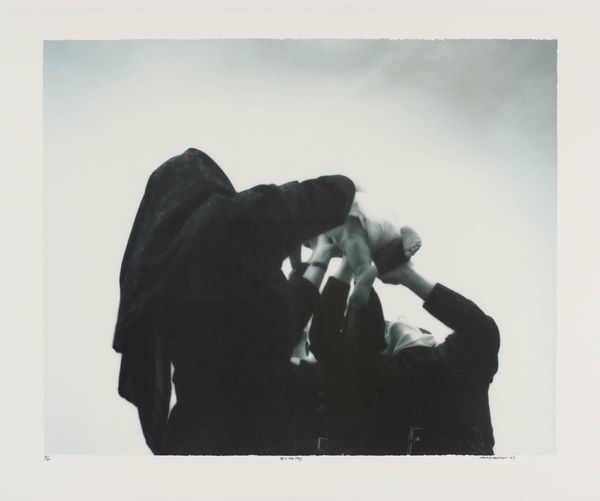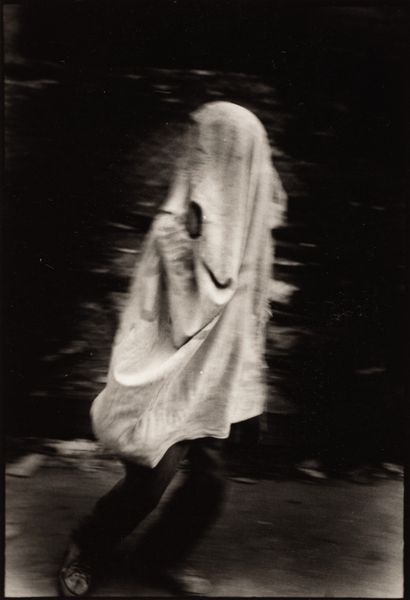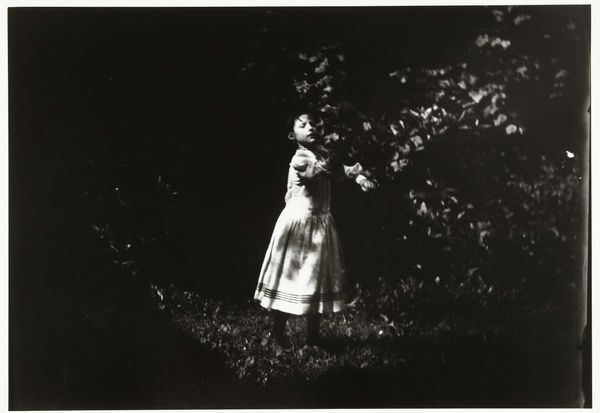
Lieselotte Felger, die Wespentaille in dem Tanz, der Kreisel, Berlin (Lieselotte Felger as “Die Wespentaille” in the Dance “Der Kreisel,” Berlin) 1931
0:00
0:00
Dimensions: sheet (trimmed to image): 25.2 × 20.2 cm (9 15/16 × 7 15/16 in.)
Copyright: National Gallery of Art: CC0 1.0
Curator: This is Lotte Jacobi’s gelatin silver print from 1931, “Lieselotte Felger as ‘Die Wespentaille’ in the Dance ‘Der Kreisel,’ Berlin." It depicts a dancer mid-performance. Editor: My first thought is disorientation. There’s a captivating blur suggesting rapid motion. I’m intrigued by the use of shadow and how that contributes to the overall surreal quality of the photograph. Curator: The image certainly captures a liminal space. The wasp waist costume acts as a physical restriction echoing constraints often imposed on women in patriarchal societies. This echoes broader debates on body image, performance, and objectification, ideas incredibly relevant still today. Editor: Yes, and thinking about the hat and costume--these cones create an immediate visual association with clowns and the Commedia dell'Arte tradition. There’s a ritualistic, almost shamanistic feel here as if she’s embodying the spirit of the Kreisel, the spinning top itself. Jacobi’s choice to capture movement obscures identity. Curator: True. This ambiguity raises some questions. Who gets to participate in art? What does accessibility look like for artists from marginalized groups who faced restricted opportunities? And what role did Jewish women play during Germany’s interwar era? This particular work challenges established cultural norms by documenting progressive, avant-garde performances. Editor: It’s like Jacobi is saying there are other forces at play—archetypes beyond our immediate grasp—controlling not only Felger but the mood and perception itself. The shadow lines are both present and not, further confusing the depth and sense. I wonder what contemporary audiences read from that interplay of presence and absence. Curator: Jacobi seems to be playing with that ephemeral nature. There’s defiance too. Women in dance often navigate precarious societal expectations. Editor: Considering how visual symbols endure, the photo captures a potent energy that keeps drawing my eye. Curator: Absolutely. I'm compelled to reconsider the ways in which photography serves both to document and interpret history, as it unfolds—or rather, as it spins.
Comments
No comments
Be the first to comment and join the conversation on the ultimate creative platform.
